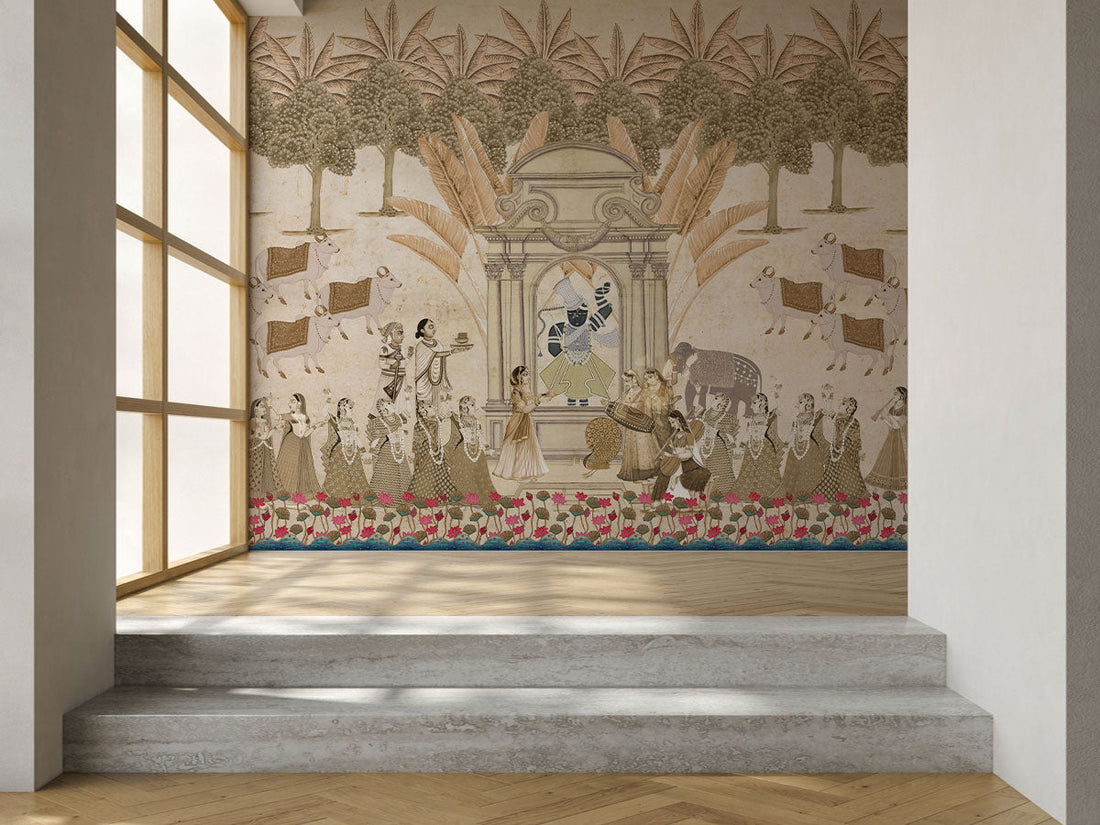
The Evolution of Bespoke Interiors: Then vs. Now
Sai SandeepShare
I. Introduction
From the ornate salons of European palaces to today’s light-filled, multifunctional homes, bespoke interiors have transformed alongside society’s tastes, technologies, and values. What was once a symbol of aristocratic status has become an expressive canvas for personal narratives, sustainable materials, and cutting-edge design. In this post, we chart that journey—from the grandiosity of “then” to the accessibility and innovation of “now”—and show how Artvikta Studio brings past and present into a cohesive, timeless whole.
From palatial woodwork to minimalist modular pieces—bespoke interiors have come a long way. Centuries ago, commissioning a custom interior was a privilege reserved for royalty and the ultra-wealthy; today, technology and global artisan networks have democratized custom design, making it both personal and practical. In this article, we’ll explore how the meaning of “bespoke” has shifted over time, highlight the key stylistic and functional differences between eras, and explain why that evolution matters for homeowners now.
II. What “Bespoke” Meant Then vs. Now
Then
-
Status Symbol: Custom interiors were commissioned by aristocracy to showcase wealth.
-
Ornate Materials: Think hand-carved mahogany, marble columns, gold leaf ceilings.
-
Craft Focused: Master craftsmen spent months—sometimes years—executing elaborate details.
Now
-
Personal Expression: Bespoke means designing around your lifestyle, not your lineage.
-
Modern Materials: Sustainable alternatives like engineered stone, reclaimed wood, and low-VOC finishes are commonplace.
-
Tech-Driven: 3D modeling, CNC milling, and AI-enhanced rendering accelerate the creative process and expand design possibilities.
III. Key Differences in Style & Function

1. Craftsmanship & Materials
Then, bespoke craftsmanship relied solely on hand tools and local workshops; now, it combines artisanal skill with precision technology. Today’s interiors may pair a hand-wrought metal balustrade with a powder-coated aluminum feature wall—each chosen for durability and aesthetic harmony.
2. Design Intent
Historic bespoke favored permanence and display: rooms that would impress future heirs as much as guests. Contemporary bespoke prioritizes emotional connection and flexibility—think built-in shelving that adapts to evolving collections or movable partition walls that convert a home office into a guest suite.
3. Technology Integration
Manual drafting and physical models gave way to digital workflows. Today, realistic 3D renderings let you “walk through” your design before it’s built, and smart-home integrations allow lighting, climate, and audio to respond intuitively to your routines. Learn more about our use of 3D design tools in our About Us page.
4. Cultural Influence
Where 18th-century bespoke looked to Versailles and Roman palazzos, the modern palette draws on a global tapestry—from Indian block-printed textiles to Scandinavian minimalism—celebrating heritage and innovation in equal measure.
IV. What Has Stayed the Same
-
Commitment to Excellence: Quality and attention to detail remain the hallmarks of any bespoke project.
-
One-of-a-Kind Pieces: Whether it’s a hand-forged door handle or a custom-draped canopy, uniqueness still defines the craft.
-
Client Collaboration: Then as now, the design process centers on the client’s story, needs, and vision.
V. Artvikta’s Perspective on Past Meets Present

At Artvikta Studio, we honor traditional methods—like collaborating directly with regional weavers and ceramicists—while embracing sustainable materials and innovative technology. Our projects often blend hand-loomed fabrics with precision-cut stone and integrate smart home capabilities for today’s lifestyle. Explore our Portfolio to see how we merge history and modernity in every bespoke space.
VI. Why This Evolution Matters Today
-
Empowerment: Homeowners can now customize every square foot to fit remote-work needs, wellness routines, or multigenerational living without the prohibitive costs of the past.
-
Sustainability: Eco-conscious choices—upcycled materials, low-impact finishes, and energy-efficient systems—align bespoke design with environmental stewardship (see more on sustainable design at Dezeen).
-
Cultural Connection: Today’s bespoke interiors serve as personal narratives, reflecting your heritage, travels, and values in a way mass-market products never could.
VII. Conclusion
Bespoke interiors have evolved from opulent displays of status to deeply personal, sustainable, and technologically enhanced living environments. In the words of a modern design ethic, “Design doesn’t just reflect the times—it helps define them.”
Ready to blend tradition and innovation in your own home? Contact Artvikta Studio and let us craft a bespoke interior that’s uniquely—and timelessly—you.
